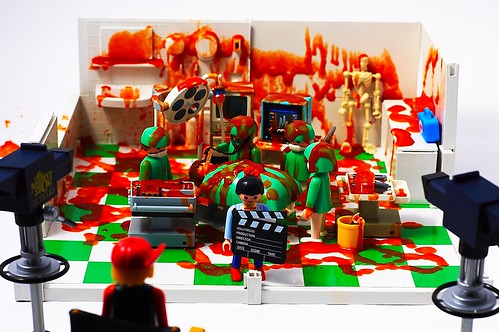Humans are social animals through and through. Our brains are hardwired to enable us to live in groups of up to 150 people - what others sometimes call a tribe.
Nowadays with over 6 billion people around we have to be more open and willing to meet and interact with others - but our peer groups (those that are close to us) - remain relatively small.
How do children learn to speak a language? How do they learn how to eat with tools? Where do they get their behavioral norms from?
At first from their parents - since they are there 24/7. They observe behavior, speech patterns, motor patterns and simply try to do the same.
As they grow older other people come into their lives - and they adapt to those as well. As social animals we want to be able to fit in and communicate with others - so we have to find a way to connect with them.
That's why babies and children have no problems learning several different languages at once - the need to connect and their ability to learn is nearly limitless.
What about pain?
First we have to distinguish between the subjective experience of pain which isn't visible and the outward expression of someone in pain. It has been suggested that the basic pain threshold is pretty much the same in every person (apart from "redheads" who are more sensitive).
The most striking difference however occurs in how people of different cultures express their pain - how they show the world around them that they are in pain. Remember - this is also a learned response! But if you are from a different culture that has it's emphasis on let's call it "quiet suffering" - you might be overwhelmed when someone shows up who is very agitated although he has only a minor injury.
That's why it's so essential to have some kind of objective measurement. I had a patient once who - despite rapid improvement in function - still complained about the pain in the most exaggerated fashion. Even tests that are meant to provoke the pain were negative - but asking him about how he felt got me the same response every time. Since in his case there was only acute trauma and pain I felt very confident that his description was something cultural and no longer something physical.
We should also be aware that the behavior we see in people is sometimes a reflection of what the medical community has "done" to them. Imagine someone in chronic pain who keeps on going - someone with a positive and life-affirming attitude.
Now put that person through a medical journey from hell - no one takes him seriously, no one listens time to listen and so on and so forth.
One simple response to such treatment is to start to exaggerate the outwardly visible part of the pain experience!
If people don't pay attention - you have to do something to change that; small children are masters at this - they use their acting skills to the fullest and without holding back.
Just watch them when they feel they don't get the attention they deserve - suddenly they start limping, develop "stomach pain", .... - they learn that by faking symptoms they can get what they want!
I'm not saying that these responses are intentional - they are learned and become automated - like the rest of our behaviors. In principle they work like a simple reflex - if you get the desired outcome the behavior is reinforced.
But as we have seen before we have this thing called metacognition and can become aware of these behaviors and change them.
The lesson for therapists is this: if you see exaggerated illness behavior (that's the technical term) - listen, educate and be a honest health care practitioner. These people don't need another snake oil salesman.
Is there a message for patients as well?
To be honest - I don't know yet. As soon as I come up with something for you to work with I'll let you know.
Hollywood also uses exaggeration as a tool: ;-)



No comments:
Post a Comment